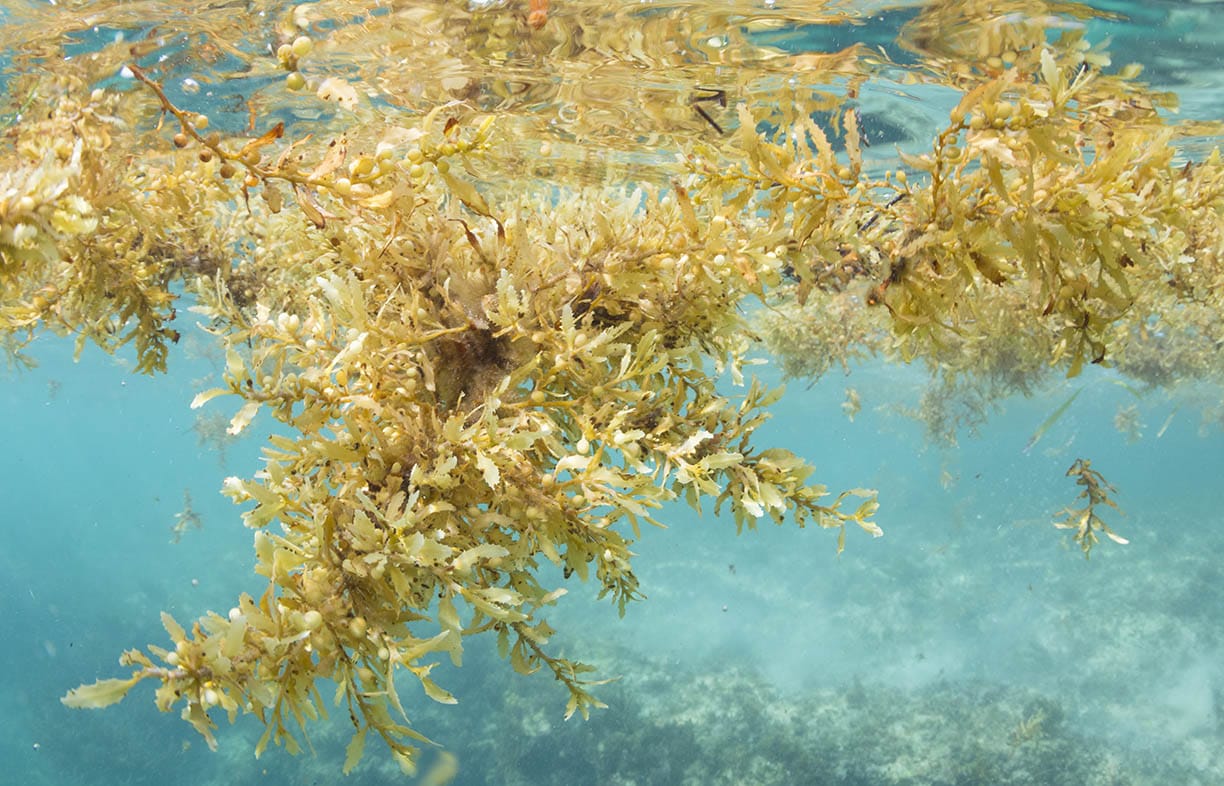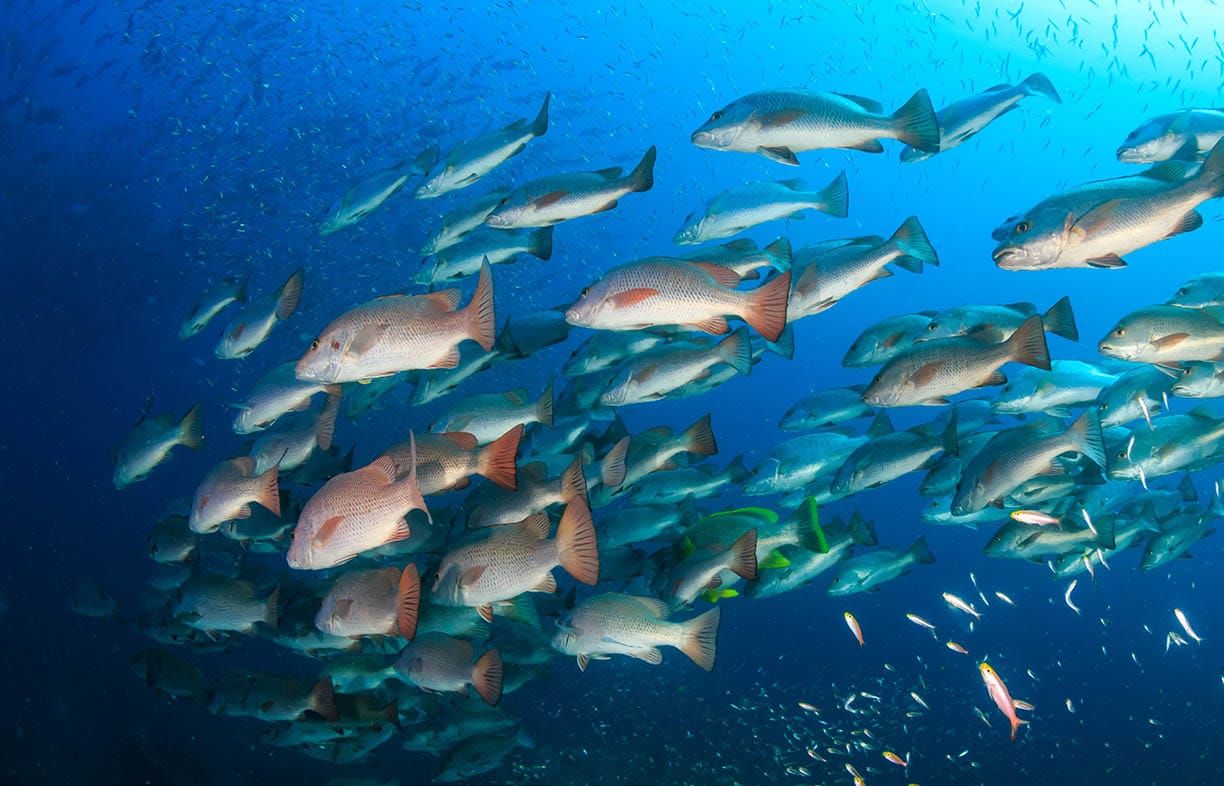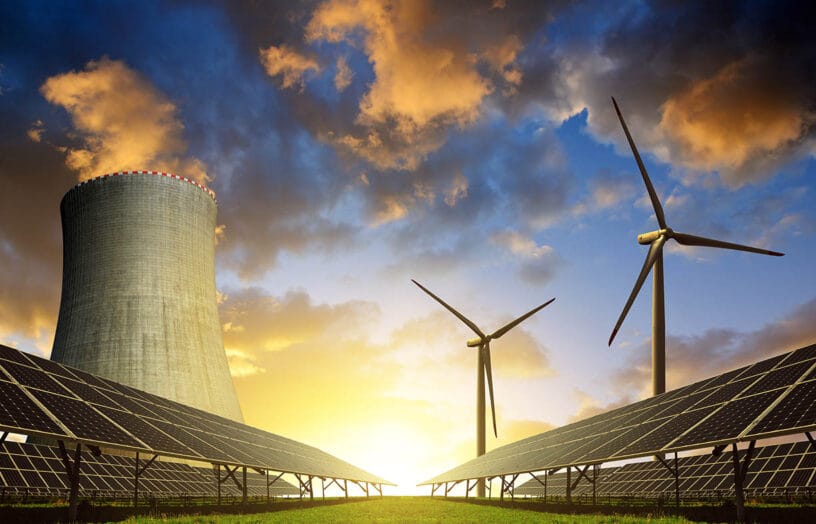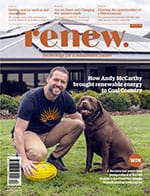Charting possibilities of the blue economy

Mia-Francesca Jones explores the opportunities of the blue economy for oceanic health, as well as human and planetary wellbeing.
The ocean, in many ways, lies at the heart of the climate crisis. All people on earth depend on the ocean, either directly or indirectly, and its wealth of resources, while oceanic myth and metaphor are embedded into our lore, literature and culture. Most importantly, the ocean sustains the ecological health of the earth—it is home to 90% of the world’s living species, provides approximately half of the oxygen we breathe, and acts as a carbon sink by absorbing large amounts of atmospheric CO2.
But our oceans are under threat, facing several environmental issues such as overfishing, warming temperatures, pollution and plastic debris. According to the Intergovernmental Panel for Climate Change, ocean warming has more than doubled since 1993, resulting in the loss of ice sheets and rising sea levels. The flow-on effects of this impacts ecosystems, coral reefs, estuaries and wetlands, as well as food sources, water quality and human health and wellbeing.
In an era where implementing sustainable practices is paramount, the blue economy emerges as a beacon of opportunity for oceanic health, offering a holistic approach to harnessing the vast potential of our oceans and water bodies, while preserving, sustaining and revitalising blue spaces.
What is the blue economy?
The blue economy refers to sustainable economic activities that draw on the ocean’s resources while ensuring environmental sustainability and social inclusiveness. It encompasses various sectors such as fisheries and aquaculture, tourism, renewable energy, marine biotechnology, maritime transport and coastal infrastructure development.
The term emphasises the importance of oceans and seas as drivers of economic growth, innovation and employment, while also highlighting the need for responsible stewardship to preserve marine ecosystems and biodiversity.
Why so blue?
You may be wondering, why not ‘ocean economy’ or ‘water economy’? The use of the word ‘blue’ has been adopted by various sectors in the same way that ‘green’ has been co-opted to describe terrestrial sustainability practices, like ‘greening cities’ and ‘green energy’. More than just a reference to colour, these terms carry underlying meaning and significance that uphold the importance of blue and green spaces as ecosystems in their own right, rather than mere resources for us to use.
‘Blue’ is inclusive of all planetary water— such as lakes, rivers, glaciers and freshwater systems. This broader scope acknowledges the interconnectedness of waterways and a need for holistic practices across industries. It is now a well-established concept that represents cross-sector collaboration. Australia, with its expansive coastline and maritime expertise, has been proactive in pioneering technologies and innovations to leverage the opportunities presented by the blue economy.
The blue economy in Australia
The Australian Institute of Marine Science’s (AIMS) latest assessment of the economic contributions of the blue economy in 2023 (using data from 2018-2021) reveals that Australia’s marine industry had a total output of $118.5 billion, and supported 462,000 full time equivalent jobs (direct and indirect employment). Other benefits of the ocean are less clearly measurable, like the recreational value of oceans and coast to Australians’ mental and physical health, and the cultural significance of Sea Country to Aboriginal and Torres Strait Islander peoples.
It’s good news then, that the Australian government has joined 13 other nations in the High Level Panel for a Sustainable Ocean Economy committing to sustainable management of 100% of their marine estates by 2025.
The technological, sustainable and economical potential of the blue economy is boundless, and includes wave energy, maritime safety and navigation, coastal protection and management, microplastic removal, algae regeneration and carbon sequestration, sustainable fishing and offshore renewables. Here’s a brief overview of a few emerging technologies that highlight the innovative possibilities of the blue economy.
Ocean renewable energy
Research conducted by the CSIRO reveals that the southern coastline of Australia, with its strong Southern Ocean winds generating consistently large waves, provides ideal conditions for wave energy production. Their data suggests that wave energy could provide up to 11% of Australia’s energy by 2050, which is about enough to power a city the size of Melbourne.
Wave Swell is an Australian company converting ocean currents into renewable energy. The Wave Swell Energy technology is based on the well-established concept of the oscillating water column – an artificial blowhole consisting of a chamber that is open underneath the waterline. As waves pass the column, the water rises and falls inside, forcing the air to pass by a turbine at the top of the chamber, which then generates electricity. This technology, Wave Swell claims, is low impact, as no moving parts are in the water, rather floating above it, which enables the device to be towed to another location. The company’s UniWave200 was included in the world-first King Island Project in Tasmania, providing wave energy to the island’s hybrid grid.
Carnegie Clean Energy is the owner and developer of the CETO® technology, which captures energy from ocean waves and converts it into electricity. Named after a Greek sea goddess, CETO is a unique, fully submerged, point absorber type wave energy technology. A submerged buoy sits a few metres below the surface of the ocean and moves with the ocean’s waves. This orbital motion drives a power take-off system that converts this motion into zero-emission electricity.

Algae farming
Algae is a sustainable and nutrient-dense food source, and it’s found in abundance on Australia’s coastlines, so it’s no surprise that seaweed and kelp startups in places like New South Wales and Western Australia are on the rise. In 2023, the Department of Agriculture, Fisheries and Forestry approved the addition of algae production to the National Standard for Organic and Bio-Dynamic Produce, allowing Australian organic algae producers to compete in the global market.
Blue carbon solutions
Australia relies on its coastal ecosystems, such as mangroves, seagrasses and salt marshes, in sequestering carbon and providing other ecosystem services. Research and projects focused on blue carbon management and restoration contribute to both climate change mitigation and coastal ecosystem conservation.
For example, AIMS is currently exploring how a seaweed called Sargassum could reduce the severity of climate change by storing carbon in tropical seascapes. The Blue Carbon Seascapes research project aims to measure how much blue carbon is flowing from Sargassum into different coastal and deep ocean environments, how long it is stored there, and how we can best protect and enhance this natural process.
Marine Biotechnology
Australian researchers and companies are at the forefront of marine biotechnology, developing products and solutions derived from marine organisms. This includes marine-derived pharmaceuticals, nutraceuticals, bioplastics and biomaterials.
A biotech company named Marine Biomedical is developing and manufacturing innovative medical products from sustainable marine sources extracted from the pristine waters of Western Australia, particularly the Kimberley coast. They hold the patent for PearlBone™, a natural bone substitute derived from mother of pearl that supports new bone growth, offering huge promise to the orthopaedic and dental industries in particular.
What are the future challenges?
While the blue economy presents a huge amount of potential for Australia’s economic output and for fostering sustainability of our important ocean systems, its viability is dependent on research, funding and government policy.
One of the main challenges of the blue economy, writes Professor of Marine Economics, Alistair McIlgorm, is around “how to define, measure and govern it, especially when so much of the world’s ocean lies beyond national borders.” These are questions yet to be answered, according to Mcllgorm.
Research collectives dedicated to exploring these challenges include the Blue Economy Cooperative Research Centre, which brings together industry, government, and research partners with expertise in aquaculture, marine renewable energy, maritime engineering, environmental assessments and policy and regulation. Likewise, Deakin University’s Blue Carbon Lab writes that their aim is to “offer innovative research solutions aiding to help mitigate climate change and enhance our blue economy, while simultaneously supporting aquatic biodiversity, economic growth, capacity building, and community wellbeing.” The ecological and economic prosperity of our oceans depends on these innovative research initiatives in tandem with an interdisciplinary, cross-sector approach.
At its core, the blue economy encapsulates a vision of economic growth that is in harmony with environmental preservation and social equity aimed at maximising the benefits derived from our oceans, while ensuring their long-term health and resilience.
As the world grapples with pressing environmental challenges, the blue economy stands as a promising framework for fostering innovation, creating jobs, and safeguarding the invaluable resources of our planet’s blue frontier.
As Yoko Ono said, “Every drop in the ocean counts”, and in the case of the blue economy, every dollar too.
Further reading
 ReNew
ReNew
Refuting myths about nuclear and renewable energy
There’s a lot of talk at present about nuclear energy being a strong contender in Australia’s energy market. But how much is political spin getting in the way of fact? Dr Mark Diesendorf unpacks some of the myths that are out there.
Read more Pears Report
Pears Report
Energy forecasts, hydrogen hype and questions of progress
Alan Pears gives us his round-up of the main energy issues this quarter.
Read more Pears Report
Pears Report
Energy costs, climate impacts and quality of life
Alan Pears brings us the latest news and analysis from the energy sector.
Read more

